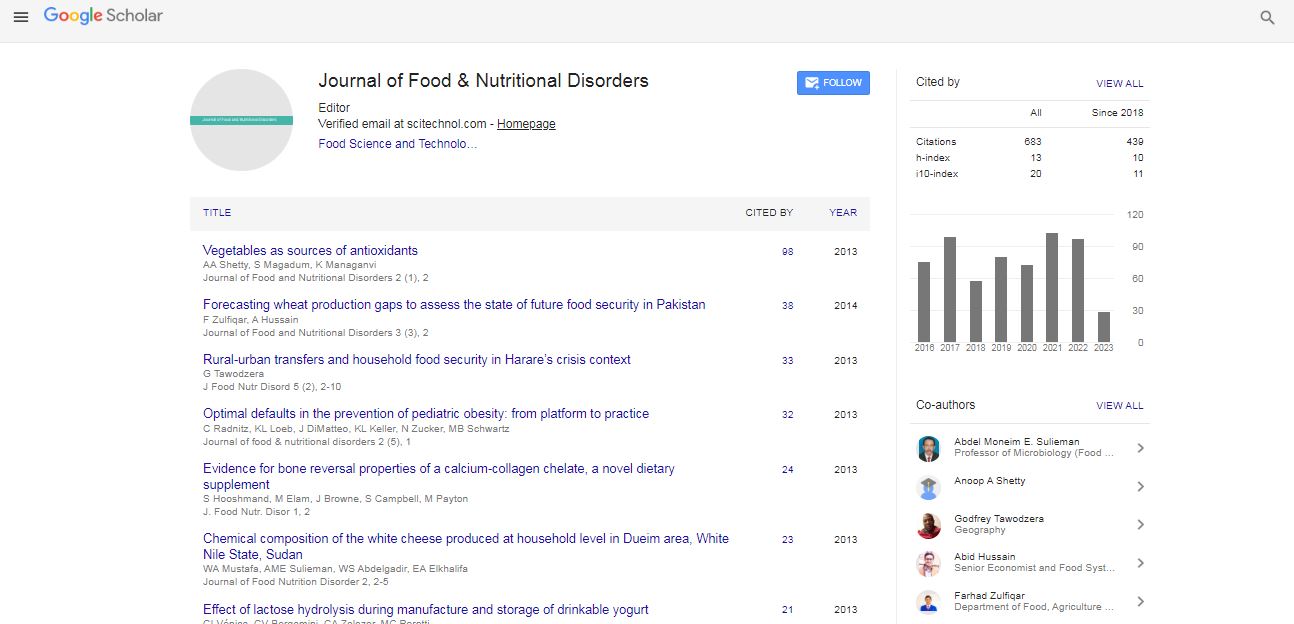Short Communication, J Food Nutr Disor Vol: 3 Issue: 6
Dietary Fatty Acids and Vitamin B3: An Effective Treatment Strategy for the Metabolic Syndrome?
| Sergio Montserrat-de la Paz1, Sergio Lopez1, Almudena Ortega- Gomez1, Lourdes M Varela1, Rocio Abia1, Francisco JG Muriana1 and Beatriz Bermudez1,2* | |
| 1Laboratory of Cellular and Molecular Nutrition, Instituto de la Grasa (CSIC)Seville, Spain | |
| 2Department of Pharmacology, Faculty of Pharmacy, University of Seville, Seville, Spain | |
| Corresponding author : Beatriz Bermudez Department of Pharmacology, Faculty of Pharmacy, University of Seville , 41012 Seville, Spain E-mail: bbermudez@us.es |
|
| Received: August 28, 2013 Accepted: October 6, 2014 Published: October 10, 2014 | |
| Citation: Montserrat-de la Paz S, Lopez S, Ortega-Gomez A, Varela LM, Abia R, et al. (2014) Dietary Fatty Acids and Vitamin B3: An Effective Treatment Strategy for the Metabolic Syndrome?. J Food Nutr Disor 3:6. doi:10.4172/2324-9323.1000157 |
Abstract
Dietary Fatty Acids and Vitamin B3: An Effective Treatment Strategy for the Metabolic Syndrome?
The metabolic syndrome (MS) may be defined as the constellation of cardiovascular disease (CVD) risk factors that comprises obesity, type 2 diabetes, dyslipidemia, and hypertension. Recent evidences suggest that, primarily due to its high monounsaturated fatty acids (MUFAs) content, olive oil and omega-3 polyunsaturated fatty acids (PUFAs) could be useful as a dietary approach for MS management, with relevance in the postprandial state. Vitamin B3, as a major substrate for nicotinamide phosphoribosyl transferase (NAMPT), also constitutes a nutritional intervention strategy for the treatment of MS. NAMPT has been shown to exert activities of central importance to cellular energetics and innate immunity. Within the cell, NAMPT is the rate-limiting step in a salvage pathway of nicotinamide adenine dinucleotide (NAD+) biosynthesis.

